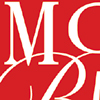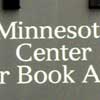“Bookish” at MCBA: Neither Fish Nor Fowl Nor Good Red Buckram
Alex Starace ventures into the world of book art and finds that it may be ill-suited for museum presentation.


Marcel Duchamp’s Boite-en-Valise is, figuratively speaking, a treasure chest that’s intended to be sorted through and played with – it’s a suitcase full of miniature reproductions of Duchamp’s own most famous artworks. It’s meant to be fun and, because one can play with it, it blurs the barrier between life and art, between collectibles and masterpieces and has gained quite a bit of fame. Ironically, though, as Duchamp’s art became a part of the canon, Boite-en-Valise found its way into art museums, where it’s been sequestered behind glass cases and is frustratingly out of reach. Such an unfortunate fate seems relevant to my experience at the exhibit “Bookish,” currently at the Minnesota Center for Book Arts: I saw artistic books on display, some of which appeared to be quite intricate, and a few of which were intriguing. But, of course, I could read none of them – they were behind glass.
My exasperation is best highlighted by One-eyed Night Crawler in a Turtleneck Sweater by Susan Porteous, a book that’s about six inches long and has an appropriate girth. It’s rather funny, especially since it’s opened to a page that says nothing more than, “Old blind Bob.” I would guess that each page (of which I would estimate there are three hundred) has a similarly amusing synonym, making for a bizarre and humorous (and surprisingly understated) addition to any coffee table. Unfortunately, I couldn’t find out for sure: there was a display case preventing me from flipping through it.
My experience with Sam Hoclihan’s book was similarly annoying. Untitled is a thick book that was opened to two strangely retro photos of a man wearing a hideous tan-orange suit, sporting large seventies-style glasses, and holding a dark tan suitcase. In the lefthand photo, the man is mugging for the camera, holding up his suitcase, looking goofy. In the righthand photo, he looks serious, as though he’s getting ready for an interview. Both photos are obviously staged, as the background of each is a baby blue reminiscent of family portraits. What’s arresting is how peculiar they are: they seem to be attempting to be unsuccessful at documenting the past, as though they’re mocking themselves. Such an off-kilter vibe bears examination, especially since the book has a lot to it: three hundred or so pages, and it looked to me as if each one featured a photo. But were all of the photos in the entire book of the same man? And were all the photos so humorously and mawkishly retro? It’s impossible to say.
Tellingly, then, the most enjoyable works were the ones that use the possibilities of the book as little as possible and therefore seem most like the kind of art you’d normally find in museums. One of these is Diane Wesman’s Human Destiny, referred to as an “altered book” because it’s no longer a book, but a sculpture made out of a book. Wesman takes an old hardback, paints the cover gold and maroon, cuts the top so there’s a hump in it, and cuts a wedge out of the center of the spine. She then spreads open the book so that, in its new shape, it looks like an intricate fan or a baroque piece of furniture. The cut-out wedge is placed in front of the main sculpture and has the following words, typeset, obviously snipped out of the book’s text: “plausible interpretation of / intuitive self / however, / extremely sketchy.” Similar bits of type peek out from holes in the book’s cover, including the word “knowledge” over and over through one of these holes.
Because the book is recycled and the piece is titled Human Destiny, there’s quite a bit of room for meditation, particularly in light of the snippets of text adorning the sculpture: Is the human soul as malleable and trashy as a repainted and reappropriated hardback? Is all our knowledge – entire tomes – destined to be transformed into a few scant clippings of evocative poetry? Similar in theme is Sara Loosen Otto’s Vulnerability, a book that’s displayed in a fan shape so that many of the pages can be seen, but none can be easily read. Fortunately, the reading of the text is secondary: the piece succeeds because it’s the physical manifestation of a concept. The pages are made to look like a chalkboard and the text appears to be chalk, scrawled in looping cursive – it seems that if the book were shut, or even breathed upon, the chalk would be rubbed or blown away and all text and meaning would be lost. Like Human Destiny, Vulnerability uses a book, but only as a form, as an idea in a piece of art – it feels more like sculpture than book art.
A third (and the largest) category of art in the “Bookish” exhibition consists of pieces that definitely would not succeed as books or literature on their own, and that also would not succeed purely as a form of art. They’re inadequate on both fronts and yet they make it into the show presumably because, even though they’re not good art, nor even passable literature, they’re viewable art that unquestionably incorporates aspects of bookmaking. They seem to be book art’s version of homilies that are painted on wood and are for sale at tourist-trap, craft-and-knickknack shops.
Primary among these offenders are many of the accordion-fold “books,” which are strips of paper folded onto themselves so that they can either be compacted into a box, or stretched out and viewed panel by panel as if they were miniature Japanese folding screens. The primary virtue of this form is that the entire piece can be viewed through a display case (most accordions are only two or three feet long fully stretched out and easy to see) though, because these pieces can be seen in their entirety, their lack of inventiveness is hard to hide.
For example, Jack Hanson’s Crash has the text “Nothing to see here . . . back up now . . . everybody give them some air . . . no don’t move them . . . I hear sirens . . . go on home,” written across the panels with an accompanying skimpy collage made out of photocopied images of anatomical pictures of the human body. And that’s it: it’s not quite a poem and it’s not quite art and gives little to hang on to in terms of interpretation (aside from the obvious). Equally disappointing is Beth Carls’ accordion structure entitled Guns that has the text “Guns don’t kill people, people kill people,” and is accompanied by photocopied images of guns and bullets – it’s an unpleasant cross between wallpaper and a bumper sticker. Even less appealing are the framed letterpress prints that, despite being handmade and quite handsome, are not visually arresting enough to survive as art alone, though they need to – the poetry they feature is depressingly mediocre.
These middling pieces are viewable in the conventional museum sense and have the faint suggestion of literary and artistic skill – this alone is why they’re in the show. It’s disheartening because it appears the curators gave up without much of a fight: instead of finding a way to display innovative and (relatively) new forms of art such as Hoclihan’s Untitled, the curators constricted such works by using traditional methods of display and chose, as a substitute, to have the majority of their exhibit consist of more easily displayable – though in many cases inferior – artwork. The exhibit is, at least in part, based on the inadequacy and lack of the imagination of the curators, and not, as it should be, solely on the merit of the artists.
The “Bookish” exhibition runs through September 17th.
MCBA Gallery Hours: Tues 10 – 9, Wed-Sat 10 – 5, Sun-Mon Closed